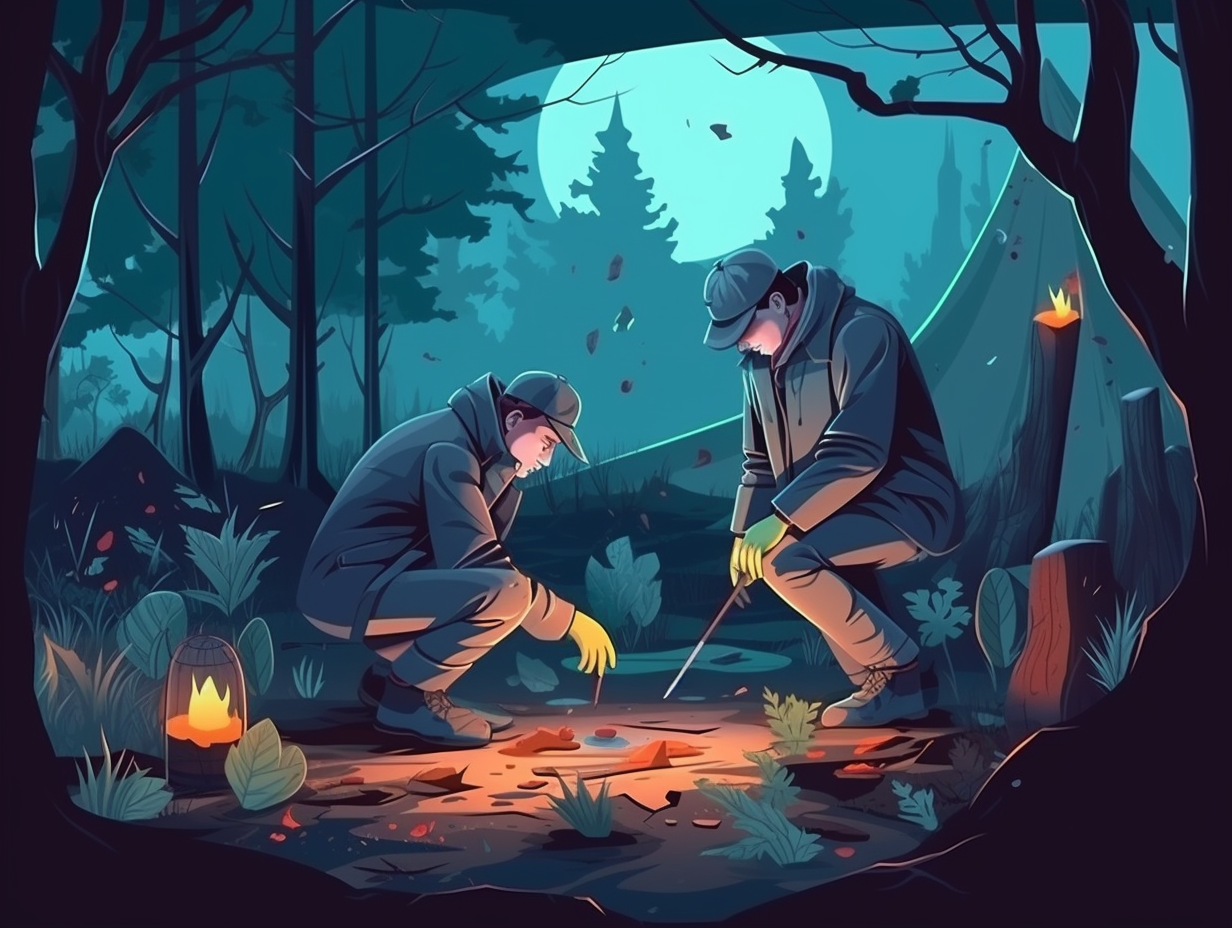Discover the Unseen World: 13 Fascinating Archaebacteria Fun Facts You Never Knew!

1. Acidic Lemon Warriors
When life gives you acidic lemons, make your cell walls stronger: Archaea not only thrive in extreme environments like Yellowstone's boiling acidic springs with a pH of 3 or less due to their supercharged outer cell wall that fends off acidity, but they've remained relatively unchanged from their ancient ancestors, providing crucial insights into Earth's earliest life forms.
Source => nps.gov
2. Extreme Environment Champs
When life throws Archaebacteria lemons, they find a boiling-hot, acidic, salty lemonade stand to chill at: These extreme-loving microorganisms call volcanic vents, blistering hot springs, and salt-saturated environments home, showcasing their astounding adaptability over millions of years in places where no other organism dares to tread.
Source => organismalbio.biosci.gatech.edu

Discover the hilarious secret behind blue cheese's unique aroma and maturation process, starring Penicillium mold and a comedy-loving bacteria! 🧀😂
=> Fun Facts about Bacteria
3. Lipid Thrones of Microbial Realm
In the game of Lipid Thrones, one domain stands ancient and immortal: Archaebacteria is the OG of the microbial realm, having lip-smacking lipids that could make a billion-year-old rock taste like fine wine! Seriously though: Archaebacteria's unique lipids have been found in Archaean period rocks, over 3.5 billion years old, offering us a tantalizing peek into the early evolution of life on our planet and their enduring role in Earth's ecosystems.
Source => fossilmuseum.net
4. Captain Planet of Microbes
Move over, Captain Planet – we've got a new group of unexpected environmental crusaders: archaebacteria! These microscopic heroes are the sole warriors in the battle for nitrogen fixation, transforming the untamable atmospheric nitrogen into the good-guy ammonia needed to create nucleic acids and proteins. Without these tiny nitrogen-wranglers, life on earth would be poor, nasty, brutish, and decidedly less diverse!
Source => organismalbio.biosci.gatech.edu

5. Party-loving Gut Friends
Looking to spice up your life with some ancient survivors who love hanging out in both unimaginable extremities and even in your own guts? Look no further than those funky Archaebacteria: These versatile organisms come in all shapes, sizes, and metabolisms, with some preferring a breath of fresh air – literally, as they're aerobic – while others thrive without oxygen and party on by producing methane in oxygen-free environments like your intestines.
Source => micropia.nl
6. Methane Breath Producers
Who says you can't have your microbes and metabolize them too? If you've ever been accused of having "methane breath," fear not, for the microbes dwelling within you may be the culprits: Methanogenic archaea, a type of archaebacteria, increase the metabolism of other gut microbes by using their produced hydrogen and turning it into methane, which then enters the host's circulatory system and can be detected on their breath through gas chromatography. Their role in human metabolism and weight gain or loss is still under investigation, so keep an eye on your gut flora for any sly changes.
Source => sciencedirect.com
7. Salt Bath Enthusiasts
You may have heard about Dead Sea salt's various health benefits, but it turns out even microbes know how to take salt baths up a notch! In the exclusive club of extremely salty spa destinations, the Don Juan Pond in Antarctica is a hot spot for bacteria wanting to let off some steam: Archaebacteria, the master extremophiles, thrive in high salt concentrations like the Dead Sea and Don Juan Pond due to their distinctive cellular structures and metabolic processes, while other organisms tap out.
Source => worldatlas.com
8. Wastewater Treatment VIPs
Whoever said "waste not, want not" must have been chatting with archaebacteria at a wastewater treatment plant party: These tiny miracle workers, known as ammonia-oxidizing archaea (AOA), play a crucial role in transforming nitrogen during wastewater treatment, with a particularly grand performance in anaerobic digesters. Oxygen concentration and sludge retention time influence their guest appearances, while researchers are still diving into the depths to unearth their exact backstage duties in the activated sludge systems.
Source => ncbi.nlm.nih.gov
9. Heavy Metal Hero or Villain
Move over, Iron Man and The Joker, there's a new hero (or villain) in town: Archaebacteria! These microscopic marvels have a flair for metal, using iron, tungsten, and molybdenum as terminal electron acceptors for energy production. But wait, there's more: They can also respire with arsenate and selenate, although they've yet to dabble in weight loss or bioremediation efforts.
Source => academic.oup.com

10. Microscopic Skyscraper Architects
While the construction industry might want to take some tips from a batch of underwater architects called Haloferax volcanii DS2, they've got the blueprint for building skyscrapers from seemingly microscopic materials: these marvelous microbes form intricate tower-like structures in biofilms that soar over 100 µm high, showcasing resourcefulness, teamwork, and a penchant for aesthetically pleasing design in the realm of archaebacteria.
Source => bmcbiol.biomedcentral.com
11. Hardcore Lifeform Rockstars
Some may call them superheroes with their powers of survival, but in reality, they're smaller than a grain of salt and more into heavy metal and toxic waste than any punk band in history: meet the archaebacteria, known to live and thrive at temperatures as scorching as 122°C, in the extremes of acid and alkaline conditions, making them the most hardcore lifeforms on Earth!
Source => ncbi.nlm.nih.gov
12. Extreme Environments Dance Masters
You may think archaea are just a bunch of wallflowers at the Extreme Environments Prom, but they're actually showing off some seriously wild dance moves with their funky flagella: Archaea have unique flagella adapted for swimming in extreme conditions, resembling bacterial type IV pili more than bacterial flagella, and often exhibit the rare N-linked glycosylation of their flagellins.
Source => ncbi.nlm.nih.gov
13. Sizzling Hot-tub Pioneers
These archaea ain't no lukewarm pool partiers; they're sizzling hot-tub fiends who basically live in boiling water and still keep dancing: These hyperthermophilic enzymes, produced by extreme-loving bacteria and archaea, can remain active at temperatures over 110°C because of their genetically encoded thermostability, making them fantastic candidates for advanced biotechnology that can handle even the warmest industrial embrace.
Source => ncbi.nlm.nih.gov
Related Fun Facts




















